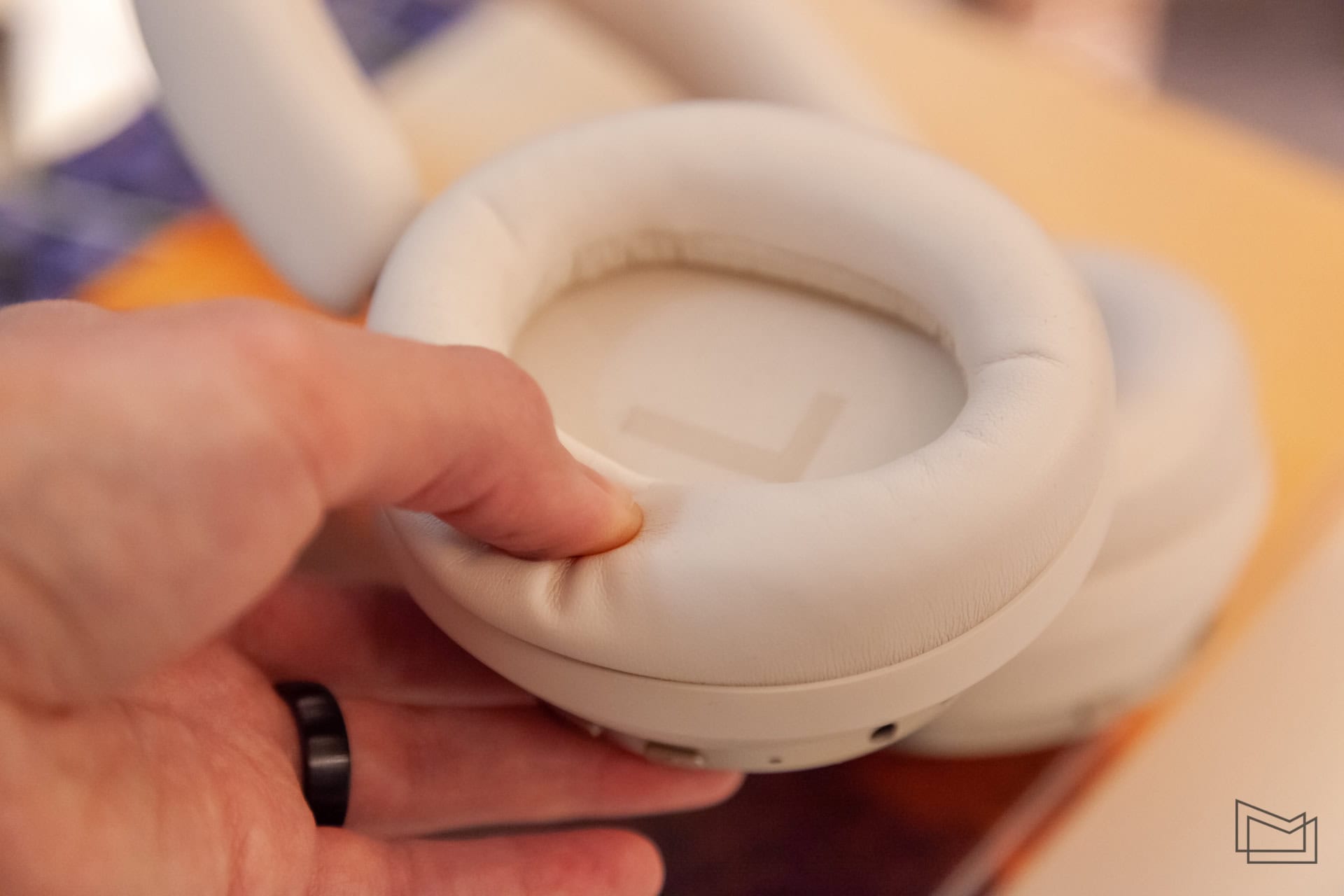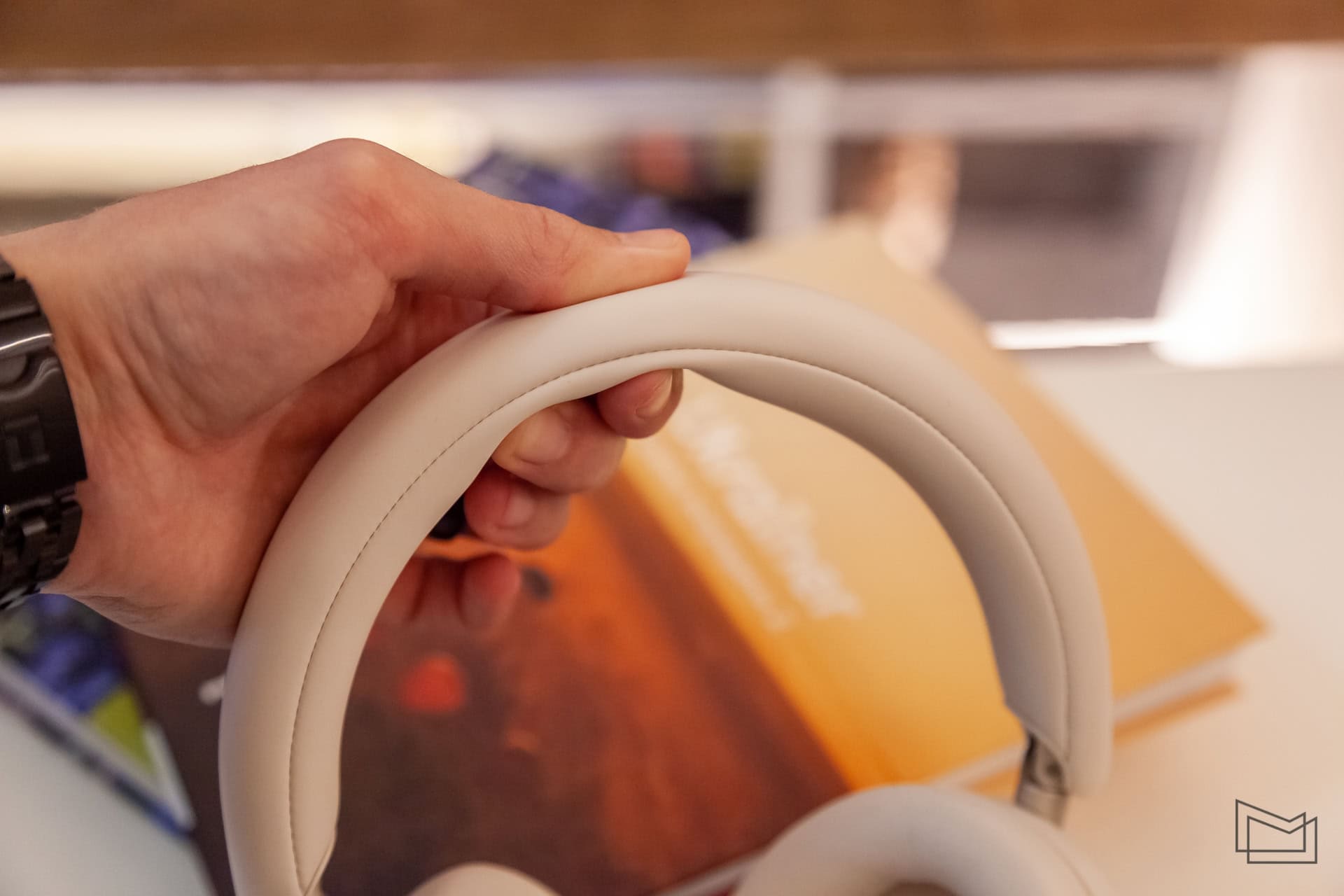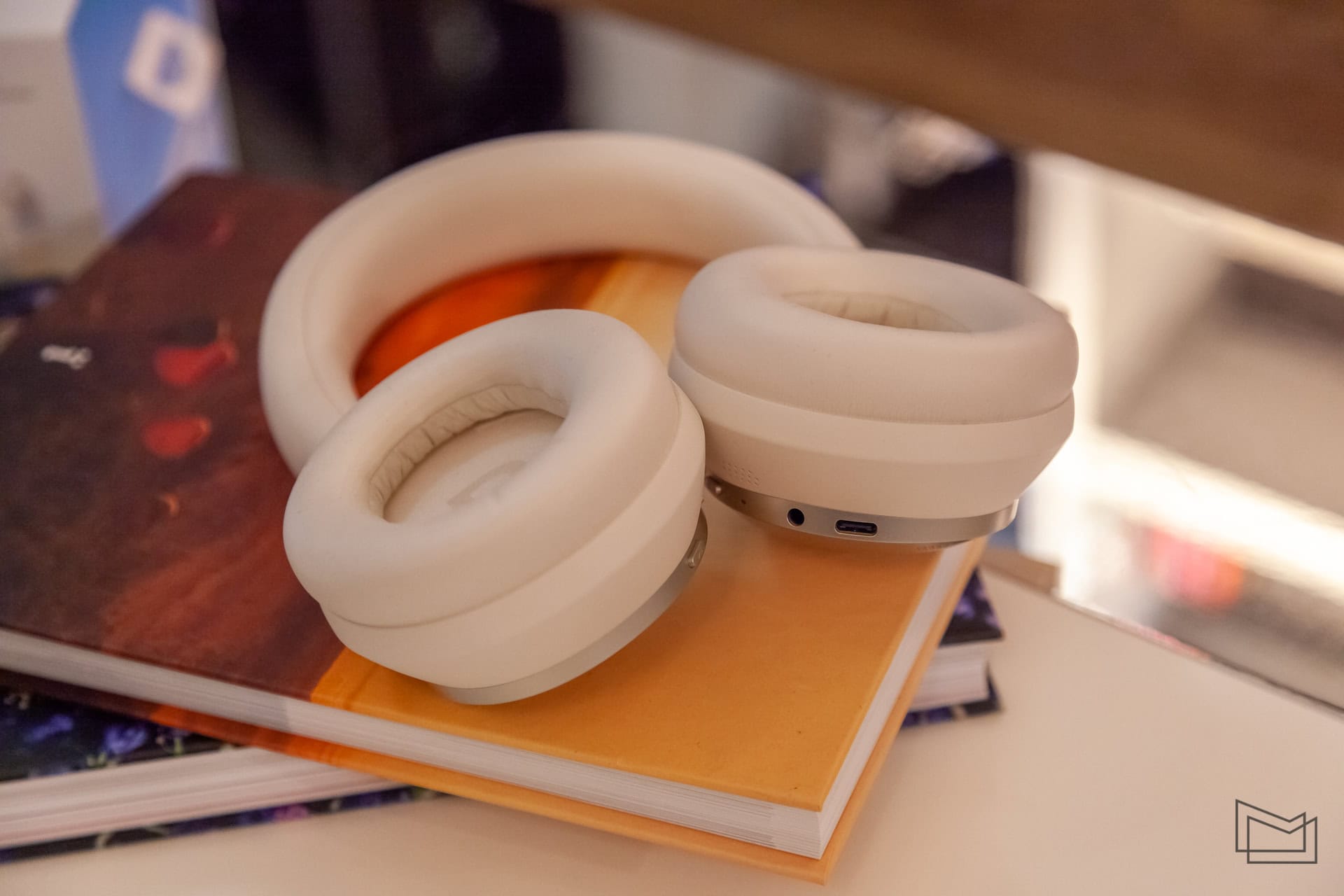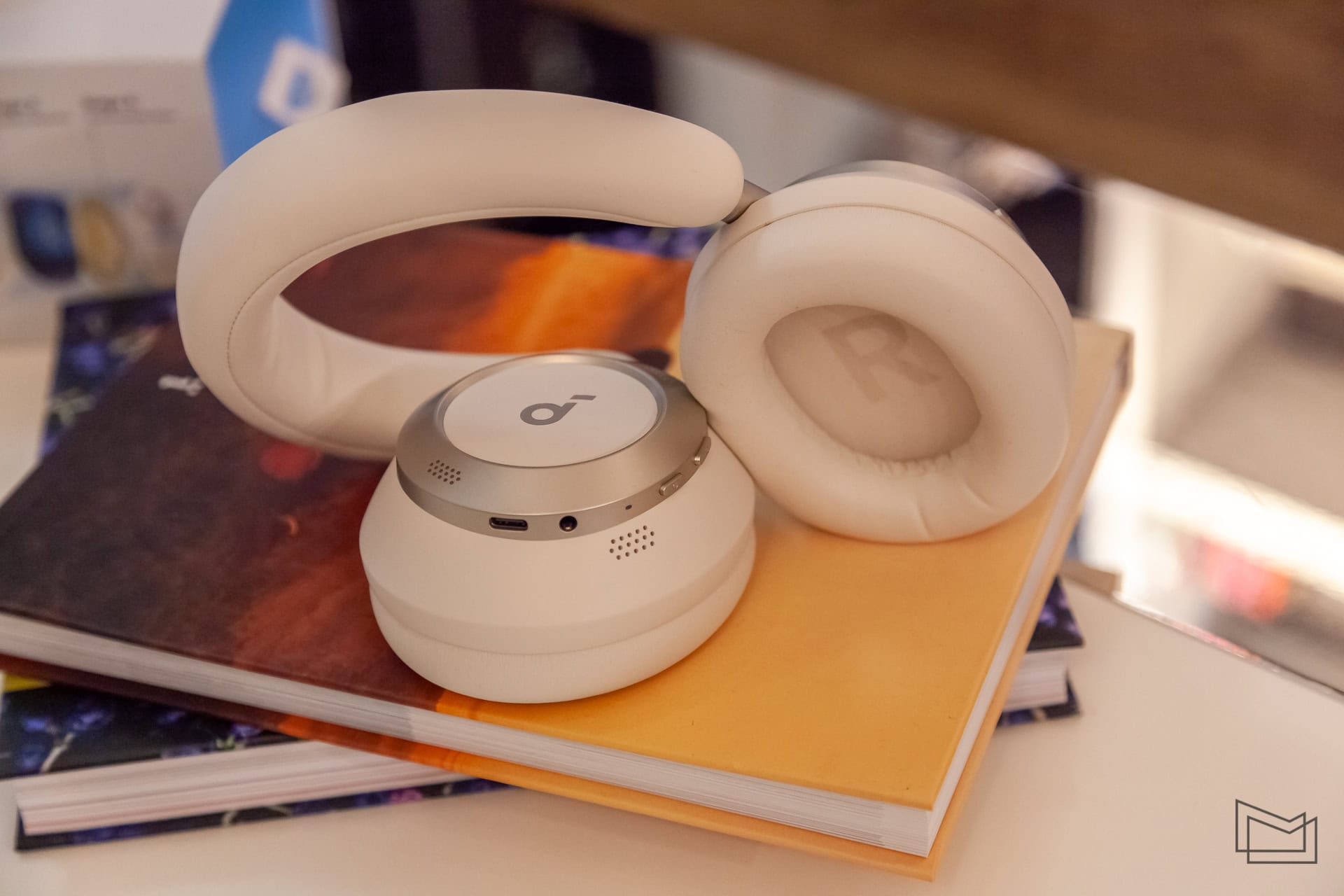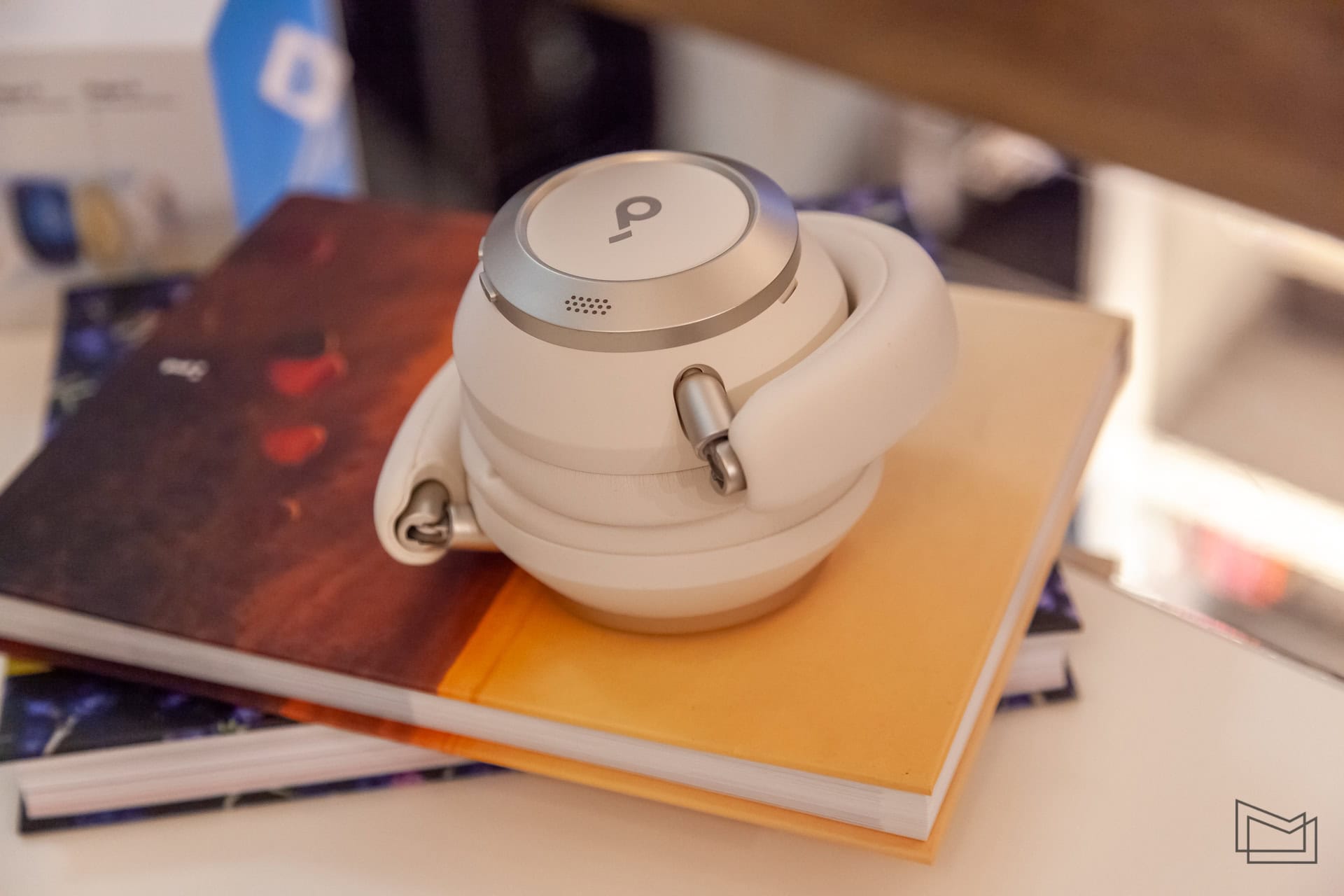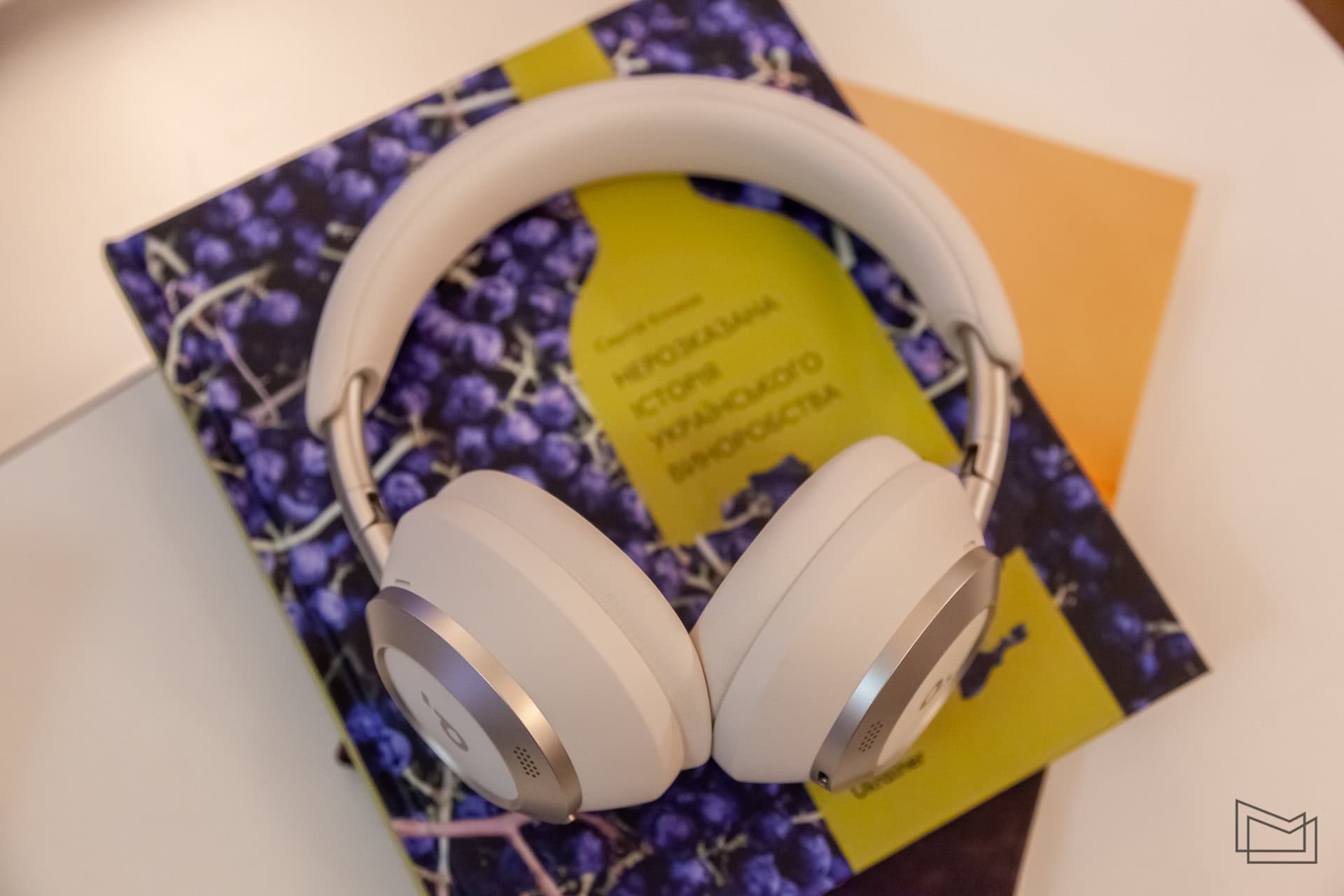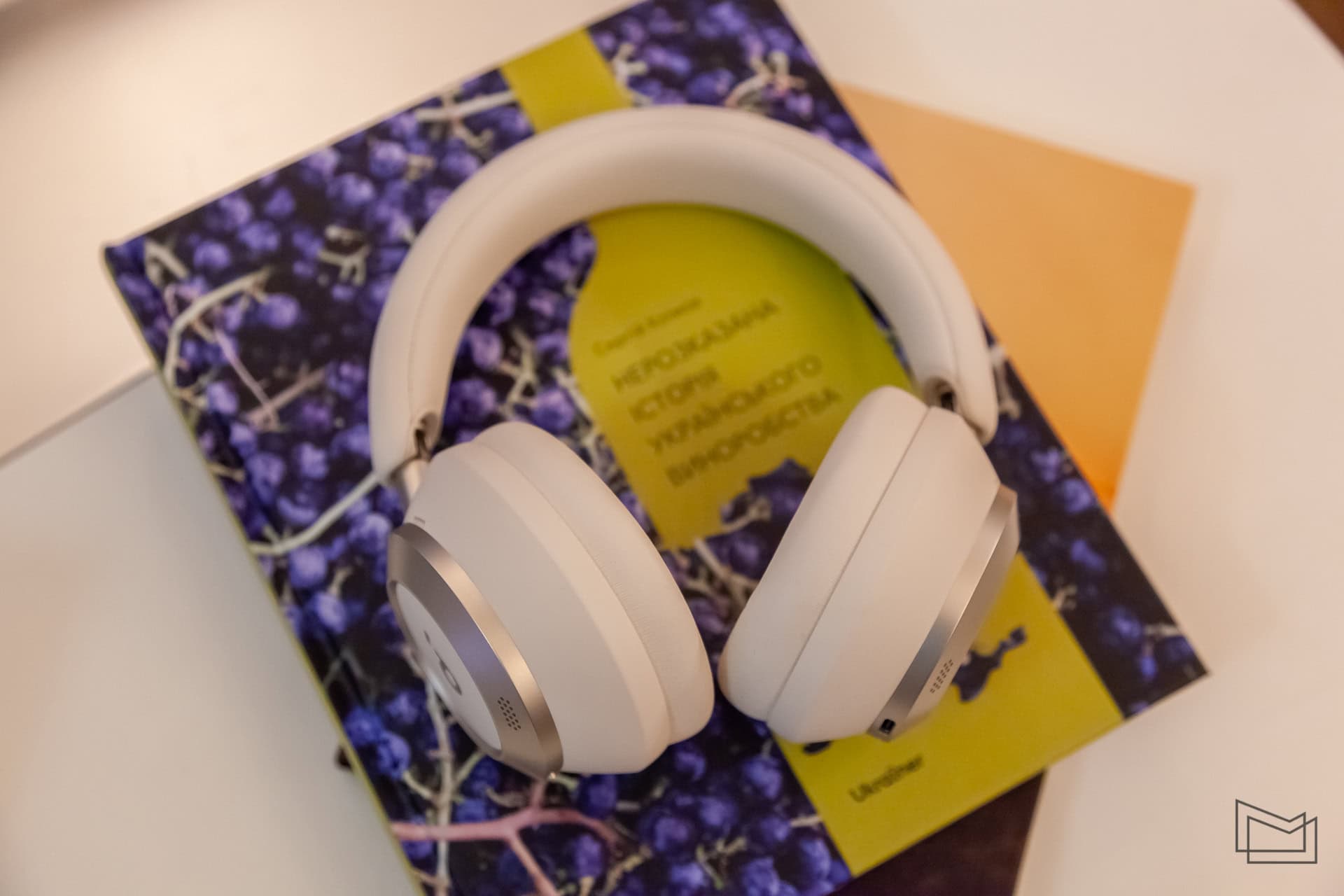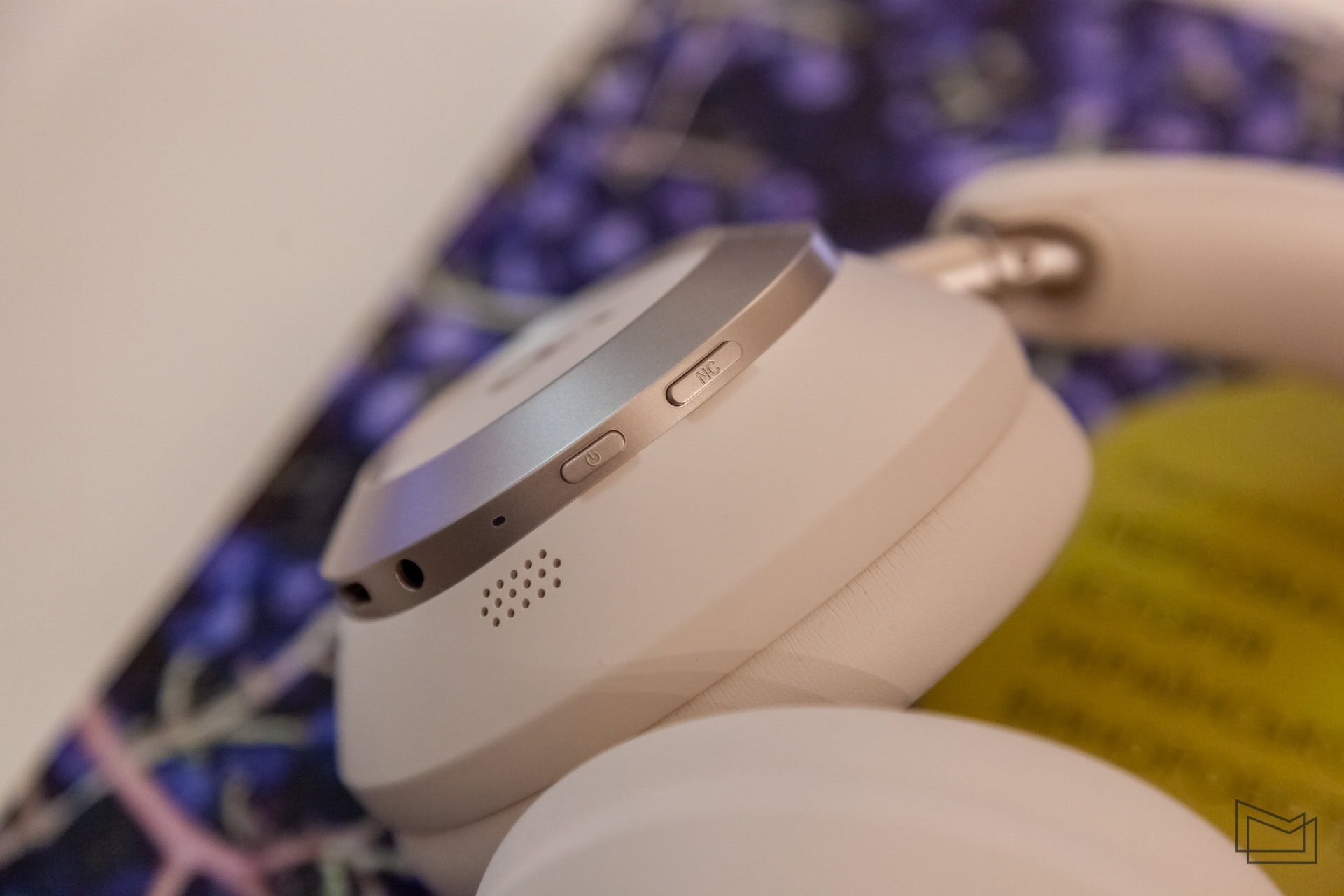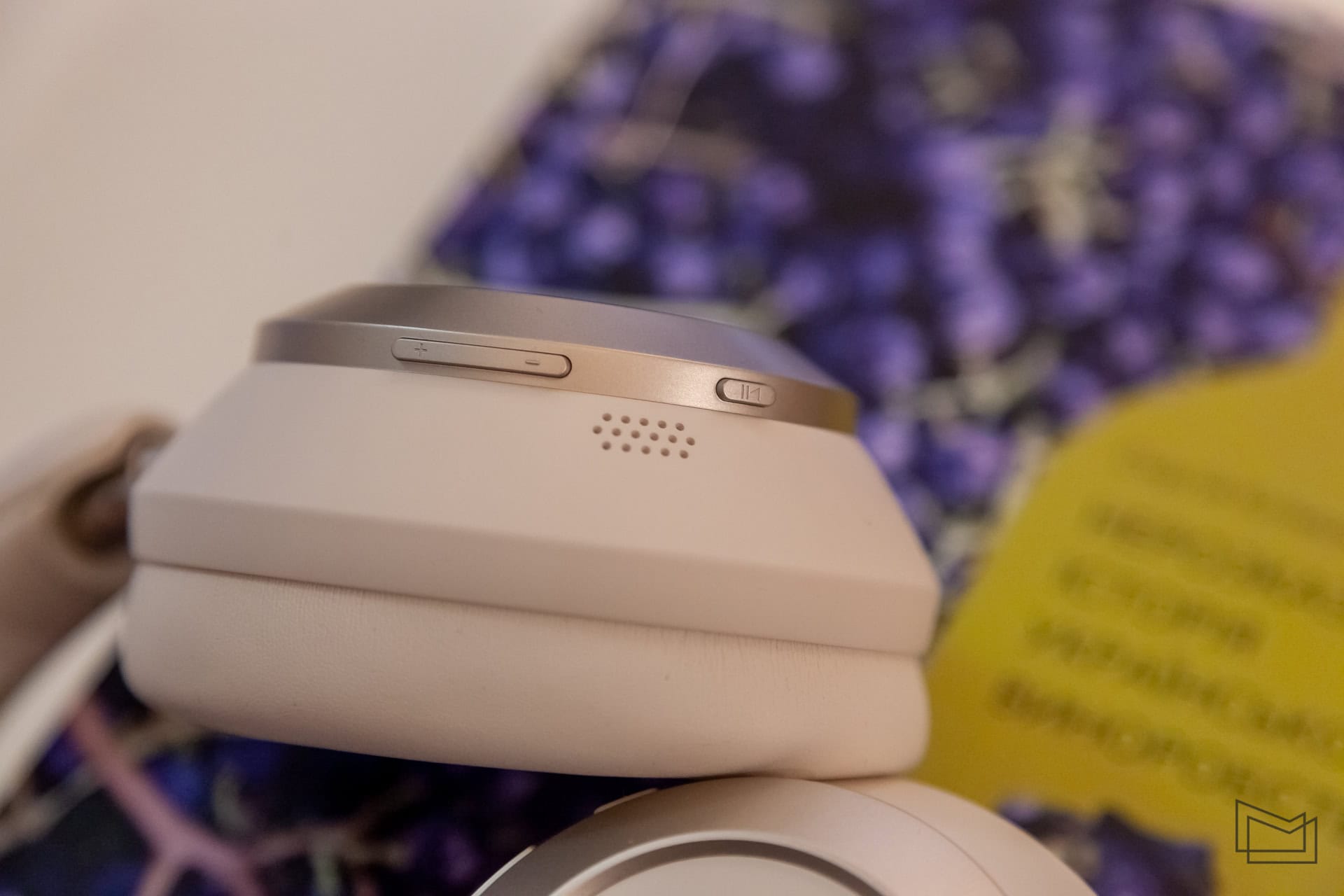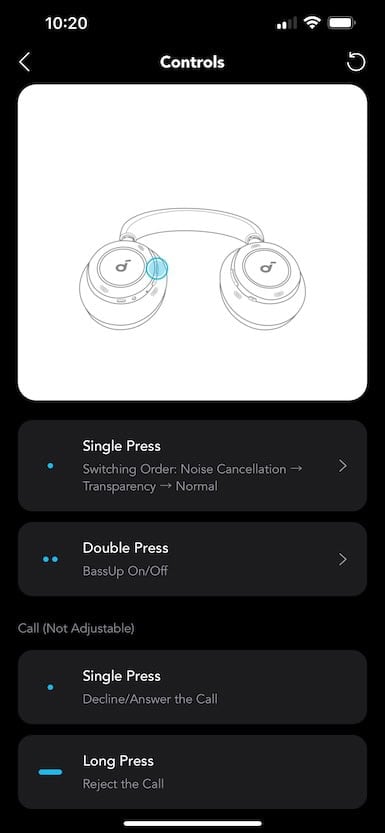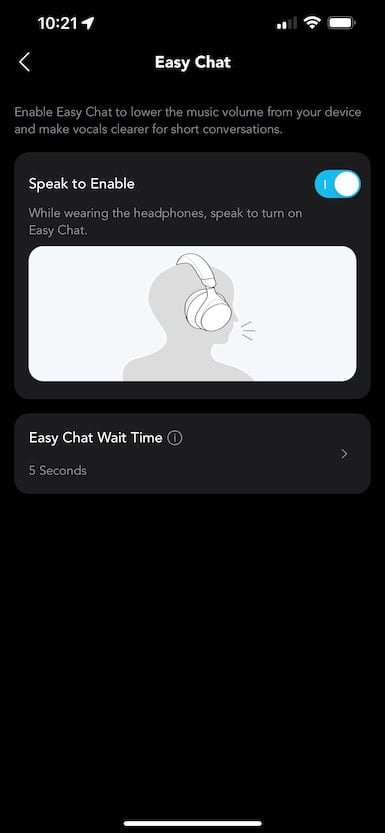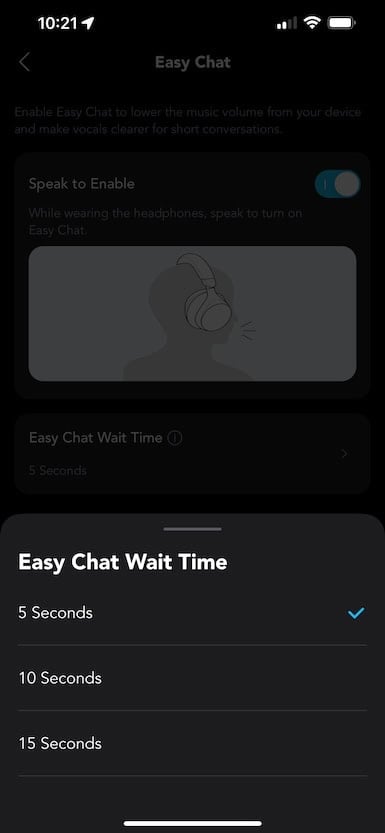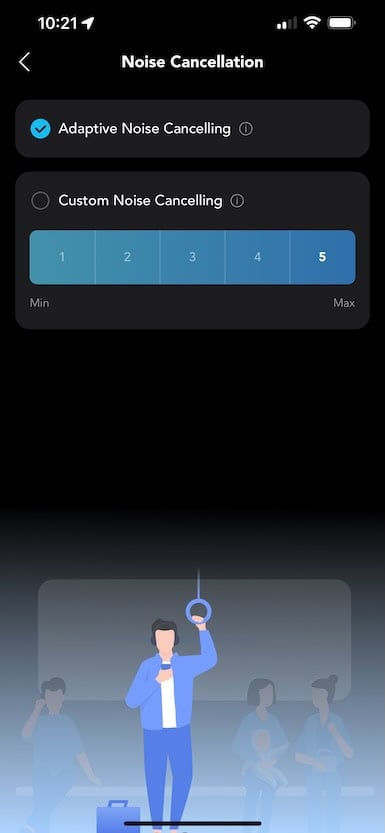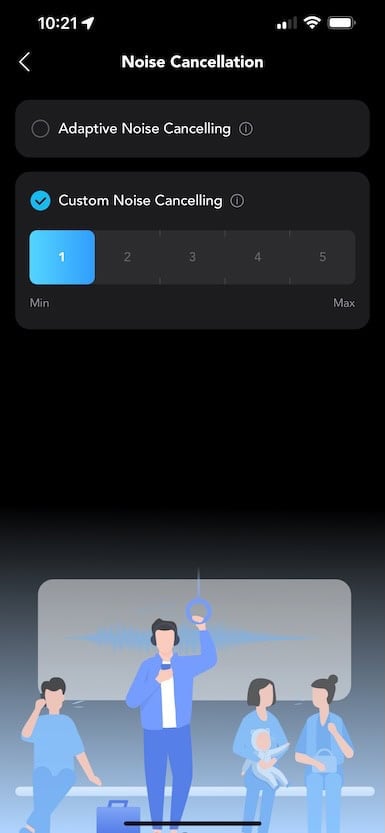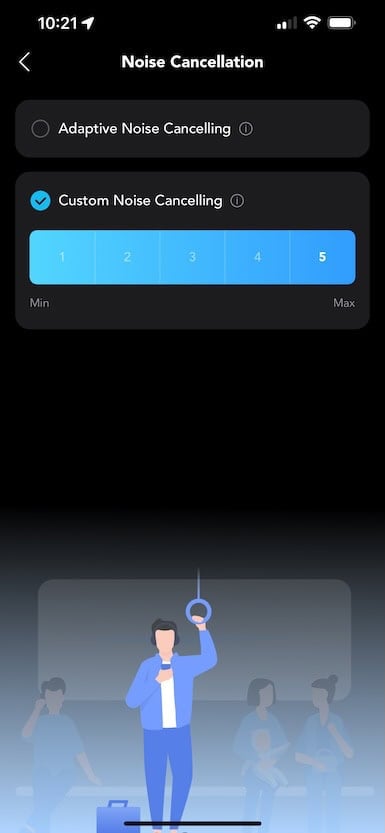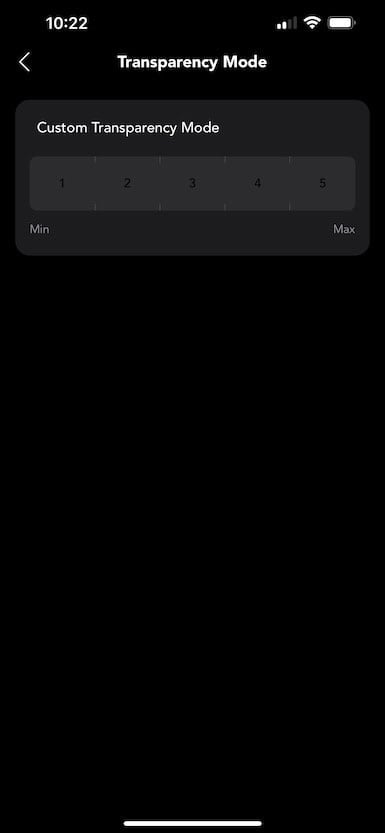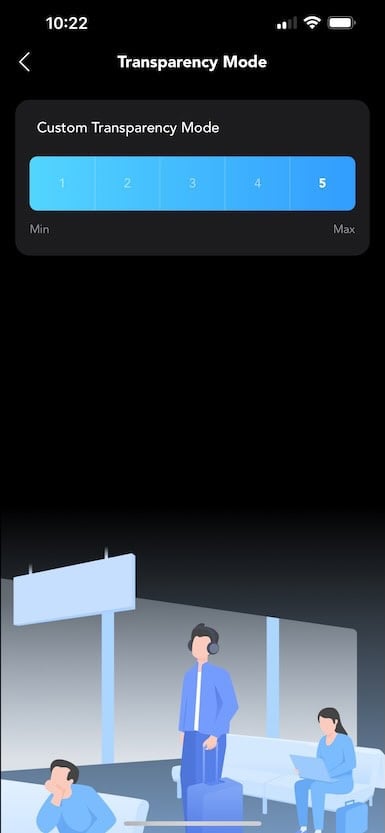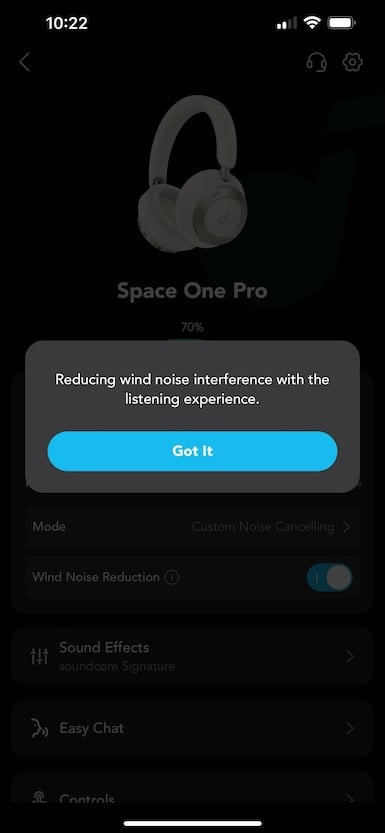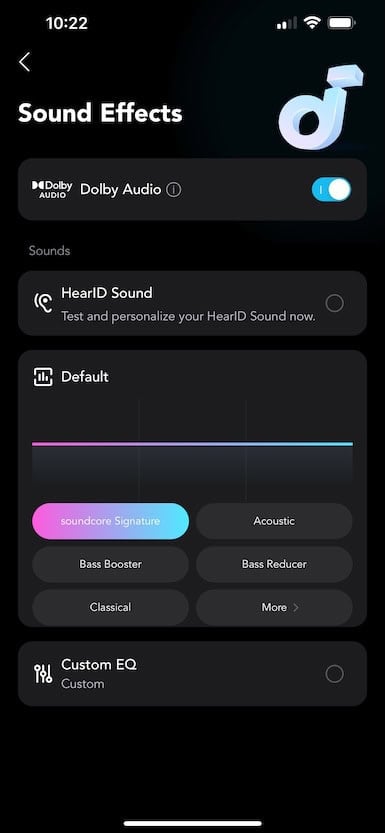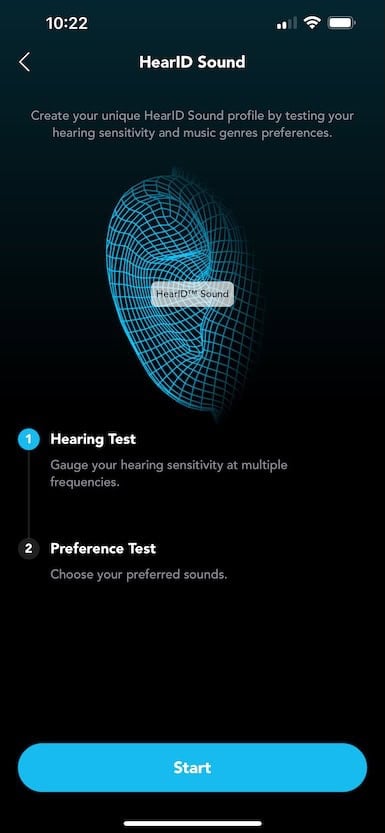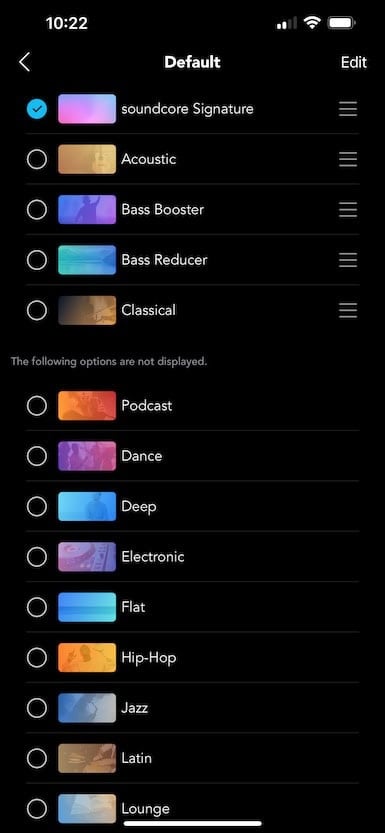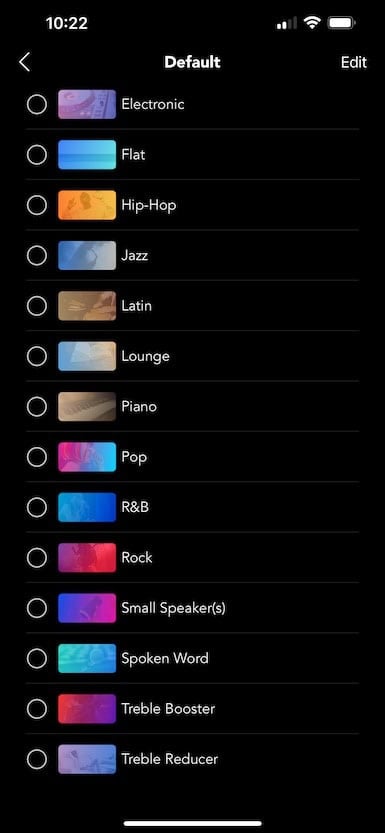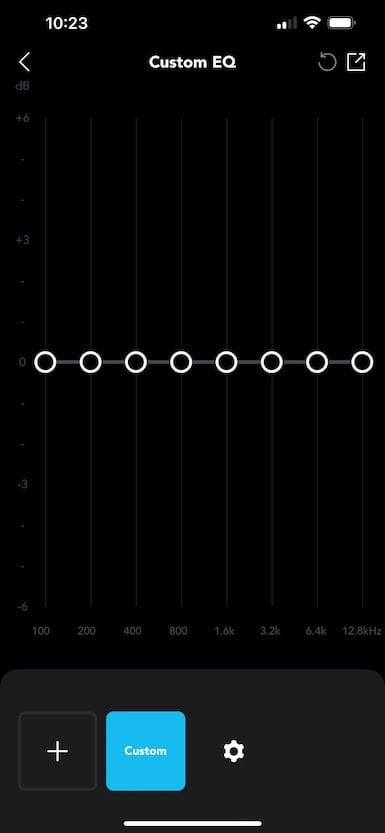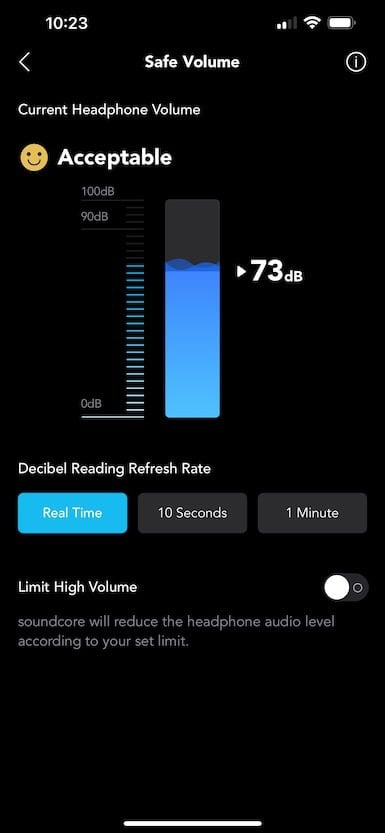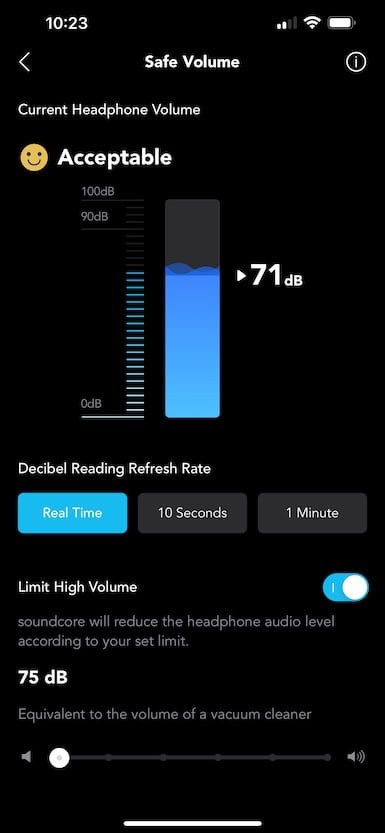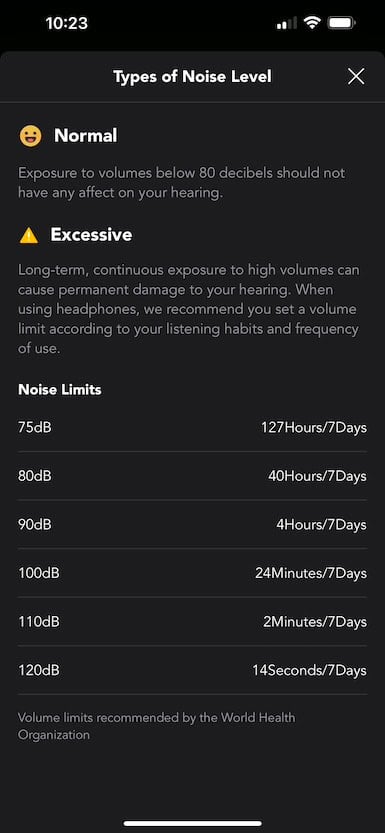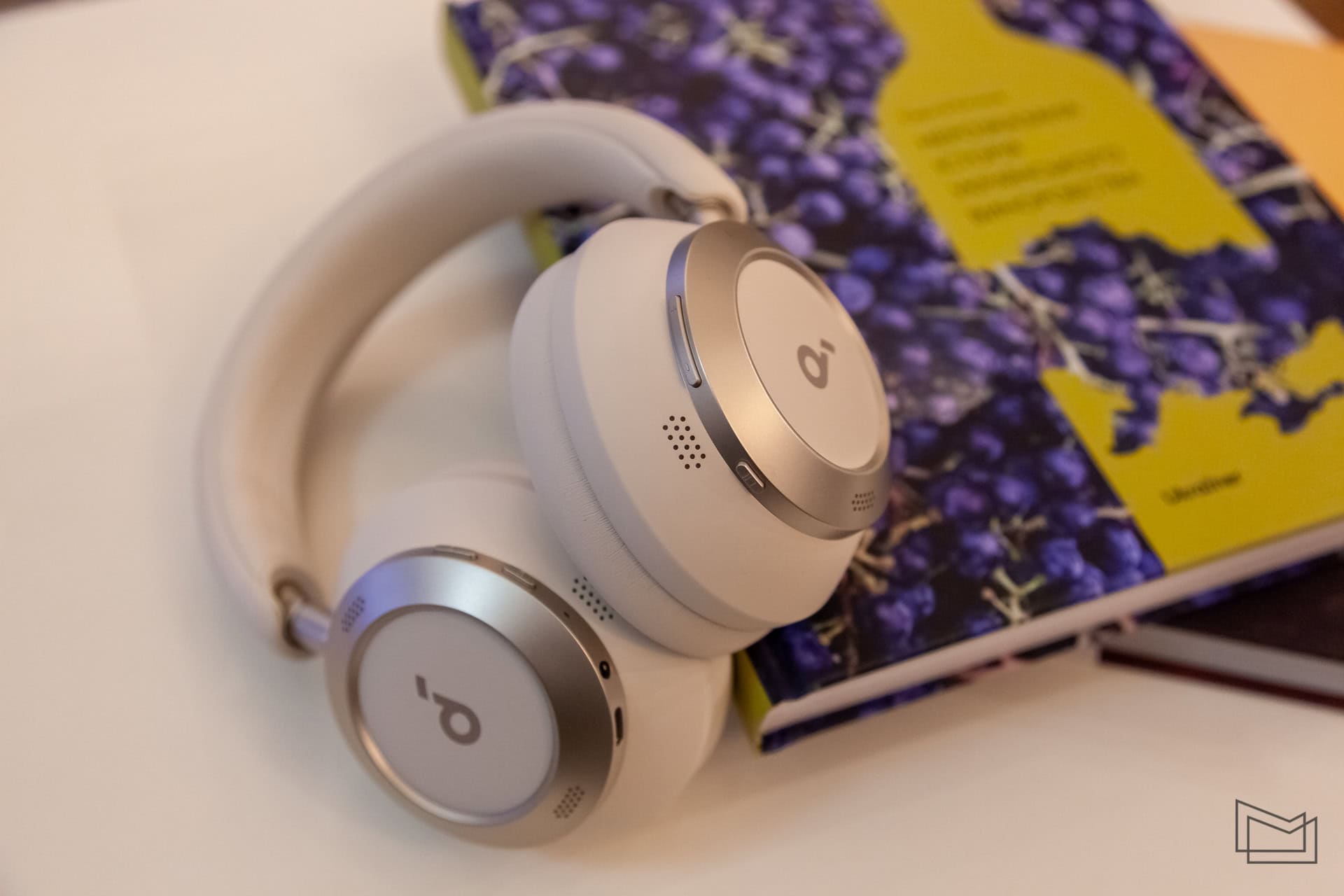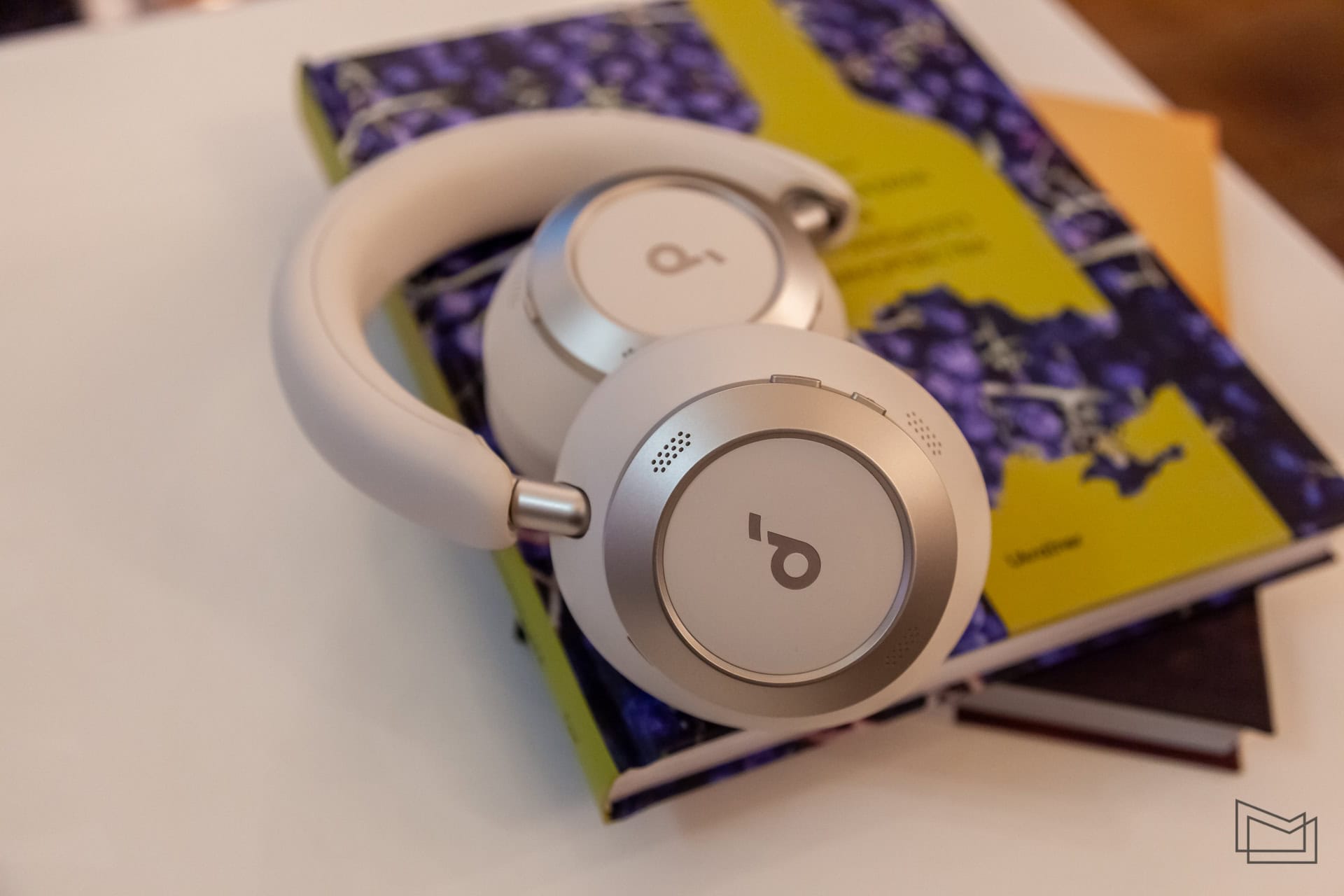We are already familiar with some of the offers of Anker's soundcore sub-brand. Some time ago, the soundcore Space One model was a pleasant surprise. And recently it has received its sequel - soundcore Space One Pro. The new product offers a better case, updated drivers, and improvements to the noise reduction system and microphones. And, as is the case with the Pro console, it has a significantly increased price. In today's review, we'll take a closer look (and listen) at what exactly the new version of the already good headphones has got.
soundcore Space One Pro specifications
| Headphone type | Over-Ear |
| Connection type | Wireless, wired (3.5 mm Jack) |
| Compatibility | Android, iOS, PC |
| Bluetooth version | 5.3 |
| Range of action | 15 meters |
| Support for codecs | SBC, AAC, LDAC |
| Management | Buttons |
| Volume control | Two keys |
| Microphones | 6 |
| Headphone weight | 286 grams |
| Cover weight | 40 grams |
| Protection against moisture | – |
| Battery life | Up to 40 hours on a single charge with noise reduction |
| Charging connector | USB Type-C |
| Recommended price in Ukraine | 8 999 UAH |
Package contents
The package of Soundcore Space One Pro is practically the same as the cheaper version. Here, the headphones also come with a charging cable (USB-A-to-USB-C), AUX, and a soft case to match the color of the selected model.
Considering the price, it would have been nicer to see a hard case for transportation in the box. However, the manufacturer took a different approach here and offers such an accessory for an additional fee. Not the most convenient solution, but Anker is a company that is used to selling accessories.
Design and usability
As expected, soundcore Space One Pro offers a similar corporate design. That is, seeing the new product, it will not be difficult to recognize the brand if you have previously seen previous headphones from Anker. Of course, the new model has received some improvements.
To begin with, soundcore Space One Pro has metal headphone mounts, not plastic ones. Not that this is a fundamental point, but it still adds a certain "premium". Such fasteners are indeed stronger and more "confident" and should last longer (although no one is immune to minor damage anyway).
The cups are also covered with plastic in a combination of a couple of primary colors. The ear pads are made of leatherette and soft filler. The hoop is covered with a similar material and there is also a soft padding over the head. The comfort of use was great for me personally. With a weight of 286 grams, there was no discomfort either, even after several hours of use in a row.
Speaking of colors, Space One Pro comes in two variants - Cream White and Jet Black. The latter seems to be more practical than the test "creamy white" version, because the light elements of the finish will get more dirty over time. Although I won't argue, the color is calm and looks very nice.
Image: soundcore
But back to the design. Space One Pro's bowls unscrew much wider than those of a conventional model. This makes it easier to throw them around your neck or fold them for transportation, hiding them in a specific pocket of your backpack. In fact, the headphones can be twisted into a "knot" so that they take up little space. The company called it FlexiCurve. So various scenarios are quite well thought out and implemented, and there are no crunches or other sounds from the structure, even if you bend the hoop to some completely non-standard positions.
Adjusting the size to suit your needs will not be a problem either. The bowls slide out without fixed steps, but this is just a feature, not a drawback. The only thing worth considering is that they may be too big for children. I may not be the best example, but I have never had to move the bowls.
I liked the improved design of the Space One Pro soundcore. The headphones have become a little more neat, certain elements of the finish are better made, and the materials of certain elements should provide a longer service life. The model also received a "credit" for flexibility and the ability to fold the case neatly.
Management
Soundcore Space One Pro controls are quite standard. The main functions are also implemented with buttons on both headphones. Thus, on the left ear cup there are buttons for power on and switching modes of the noise reduction system, and on the right ear cup there are buttons for volume and Play/Pause (you can also switch tracks and call the voice assistant with a long press). There are no problems with the layout, the keys are easy to find and you don't need to get used to the positions.
You can also customize your preferred NC modes, and double-click to add bass. The same key can be used to answer or reject a call. It's a fairly straightforward and logical principle, but not all functions will be needed often.
In Space One Pro, Easy Chat is activated by voice only. When the function is enabled, as soon as the user starts talking to someone, the music becomes much quieter and the Transparency mode is activated. Unfortunately, there's no way to change the sensitivity, and the function is activated at the slightest voice trigger. So personally, I'm not sure it's suitable for most situations. But I don't rule out that it may come in handy from time to time.
Connectivity and functionality
As should be the case with modern universal headphones, the soundcore Space One Pro primarily operate via Bluetooth 5.3, but can also be connected via AUX. The USB port is only used for charging. The wireless model will also offer Hi-Res Audio with LDAC support, but only owners of Android smartphones will be able to use this feature.
It also supports simultaneous connection to two devices. For example, the headphones can be easily switched between a laptop and a smartphone when changing music or video. However, when, say, the sound source is a laptop, and a notification appears on your smartphone, playback stops for a short pause and continues after the notification. These pauses are quite understandable, but when there are a lot of notifications (and pauses), it can get annoying to a new level.
The manufacturer also continues to place significant emphasis on the noise reduction system. It is this function that greets the user on the main screen of the branded application. There are still three modes: Noise Cancellation, Normal, and Transparency. The first one allows you to choose from automatic adaptive noise reduction or manual intensity selection in five steps. The latter has been left without automatic correction, but it also has the same five steps. And in both cases, the option to "fight" the wind is offered.
The next item is sound settings. Here you can turn on Dolby Audio, there is a HearID function (which, after a short test, will adjust the sound to the owner's hearing characteristics), a lot of sound presets for different genres, or your own version of the eight-band equalizer.
Finally, the app has a Safe Volume feature that provides options for monitoring and limiting the maximum volume so as not to damage your hearing. The headphones are quite powerful, so it makes sense, especially if there are children among the users.
Among other things, the headphones will also offer features such as Side Tone (you can hear your own voice during calls), low battery notification, automatic shutdown options, a widget with ANC modes, system updates, and more.
To my personal surprise, the soundcore Space One Pro did not receive a head detection function. That is, the new headphones do not have a proximity sensor and the function of stopping the music as soon as they are removed. It's not critical, but it would be a little more comfortable with a sensor.
Sound
The soundcore brand still emphasizes the performance of the noise reduction system. And for good reason. It is able to cope with most ambient situations or rather loud keyboards, leaving the owner "alone" with the music. The Transparency mode, on the other hand, perfectly captures the sounds around you and their location. The improved ANC modes are really capable of pleasantly surprising. Expectations were much lower for a fairly young brand, and now this system is quite capable of competing with much more experienced representatives of the category.
Built-in microphones also allow you to participate in a meeting or answer a phone call. This may not be the best solution for a noisy street, but it's not a bad one for the workplace. The quality and volume will satisfy the interlocutors, and four microphones (and artificial intelligence, of course, are working on this simultaneously). There are six microphones in total. Therefore, conversational capabilities can also be attributed to the model's strengths.
The speakers have also been updated in the Space One Pro soundcore. Three-component drivers promise improvement, and the basic settings were clearly made for users who prefer bass. I never thought I'd say this, but these headphones have too much bass. Probably, this is the most infrequent case for me personally, when I wanted to reduce them a little bit, and not vice versa. And not because the speakers cannot cope with them and begin to "choke", but because the headphones vibrate too much on your head.
And the bass takes over a considerable part of the stage. However, it doesn't block all other frequencies too much. But you can still get tired of prolonged vibrations in your ears. But there's a caveat here - this will only affect those users who tend to listen to music at close to the maximum volume level. If you turn it down, the headphones will stop "jumping" around your ears, but there will still be plenty of bass. Of course, it adds volume to some genres and fits well, but, for example, it is unnecessary for instrumental compositions.
A large number of presets for different genres won't help much. Not all of them are successful and well suited to the desired character. But for those who want to experiment on their own, the equalizer is still left with the ability to save their own options. By trial and error, you can still find a more or less suitable balance for yourself. And this is good news.
In fact, fans of electronic music, Hip-Hop, Trip-Hop and other similar genres that place a considerable emphasis on bass should like these headphones. Especially those who are not averse to excessive bass. In other cases, it will be difficult to recommend the Space One Pro soundcore, as it is not a model that will suit those who like perfect balance.
Space One Pro will still be able to decorate other everyday tasks. Owners of such headphones, who, for example, often watch action movies or car videos in them, will not be disappointed with the sound. A good stereo system will also help. If you connect to an audio source via AUX, the sound will change slightly, but not too much. The noise reduction modes will also work.
Battery life
The new Space One Pro soundscapes should provide up to 40 hours of operation with ANC enabled. Without it, the total music listening time will increase to 60 hours. There is no exact indication of the charge (only 10% increments), but with such a margin of autonomy, this is not a very important point. Moreover, you can count on the approximately stated time.
Charging, of course, is done via USB-C, which simplifies the task. The Pro version also offers fast charging, so these headphones should be able to replenish the battery for 8 hours of operation in 5 minutes. However, you can't listen to music while charging.





